We include products we think are useful for our readers. If you buy through links on this page, we may earn a small commission. Here’s our process.
Greatist only shows you brands and products that we stand behind.
Our team thoroughly researches and evaluates the recommendations we make on our site. To establish that the product manufacturers addressed safety and efficacy standards, we:- Evaluate ingredients and composition: Do they have the potential to cause harm?
- Fact-check all health claims: Do they align with the current body of scientific evidence?
- Assess the brand: Does it operate with integrity and adhere to industry best practices?
If you haven’t baked bread in the past year, have you really lived through the coronavirus pandemic? After all, it appears that every single person you’ve ever met is baking bread—whether it’s through the arduous process of maintaining a sourdough starter or simply going the easy route and baking no-knead bread with your handy friend (if you’re lucky enough to have some!), instant yeast. But no matter what you’ve seen or done, it is certainly necessary to at least learn a little bit about the art of baking bread.
That’s the goal of “How to Raise a Loaf,” a bread baking manual by baker Roly Allen. In his bread-baking starter kit, Roly walks both novice and experienced bakers through his tips and tricks for baking great bread at home, from explaining the anatomy of a grain to a great method for making your own starter at home. He talks through a few important tools you should definitely have on hand—like a kitchen scale and kitchen scissors—and provides step-by-step visuals on his kneading and folding techniques, so you always know what you should be doing.
Along with a classic sourdough recipe, Roly encourages bakers to have fun with bread, offering recipes for poppy seed rolls, walnut rye bread, and chocolate-studded sourdough. But if you simply are looking to perfect your sourdough bread at home, test out Roly’s recipe, found below. His version can be done overnight, rising for about 10 hours, then baked in a casserole or Dutch oven until the top is dusty brown. He also provides techniques for kneading bread—for those who are upgrading from the no-knead variety—which is an imperative part of the bread-baking process. His biggest suggestion? Don’t make it too complicated: The only three actions you’ll need to maintain are stretching, folding, and turning.
Once you complete that first loaf—and post it to social media, as it is wont to do—you’ll be ushered into the not-very-exclusive pandemic bread baking club. Welcome! We’re glad to have you.
Excerpted from How To Raise a Loaf by Roly Allen Copyright © 2020 by Roly Allen. Excerpted by permission of Laurence King Publishing Ltd. All rights reserved. No part of this excerpt may be reproduced or reprinted without permission in writing from the publisher.
Most of the recipes in this book use a simple pull-fold-and-rotate action to work the dough, but when a recipe calls for a knead, use this basic method.
Chances are, if you think of bread making, you think of kneading: it’s the skill that we all associate with baking, and it’s one that some top bakers (often working with very wet dough) take very, very seriously indeed. That said, there’s no need to make it too complicated: the fundamental steps of stretching, folding and turning are all you need to organise the gluten molecules in your dough, turning it from a sticky blob into a smooth ball.
Lightly dust your work surface with flour so that the dough doesn’t stick to it. Take your dough from the bowl and let it fall onto the surface.
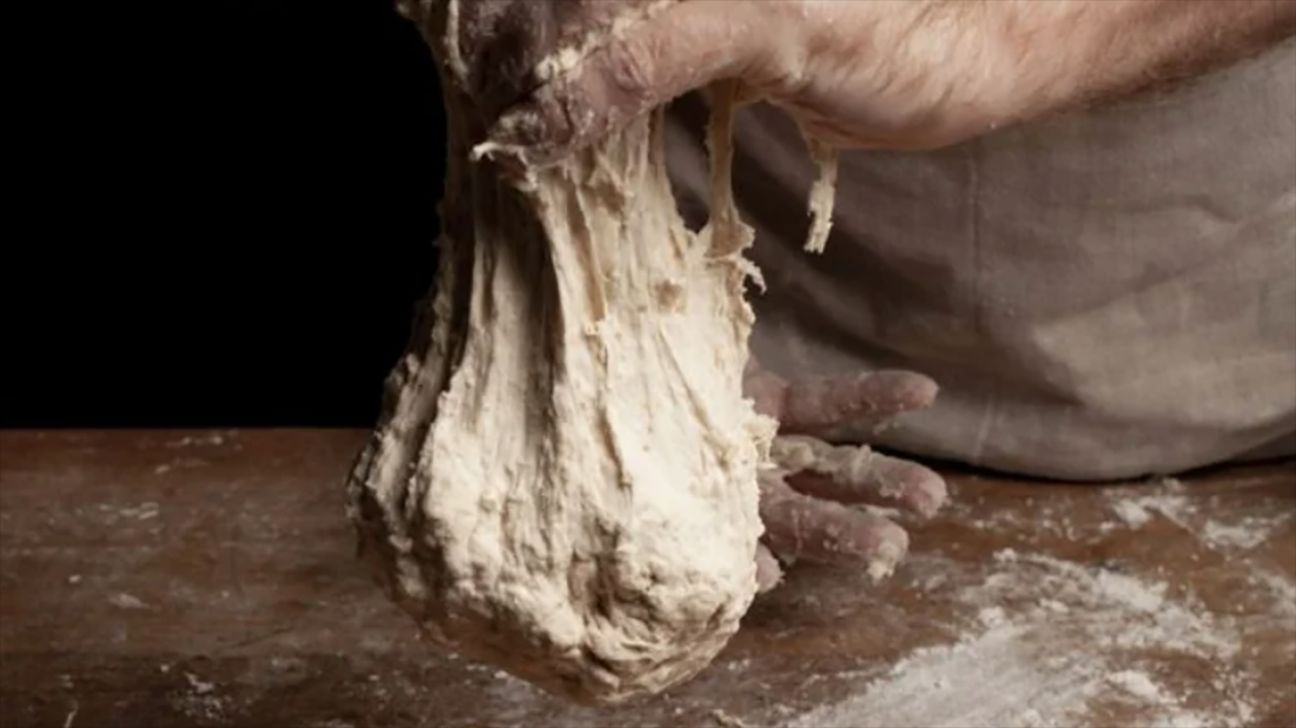
Pull the ball open with your fingertips…
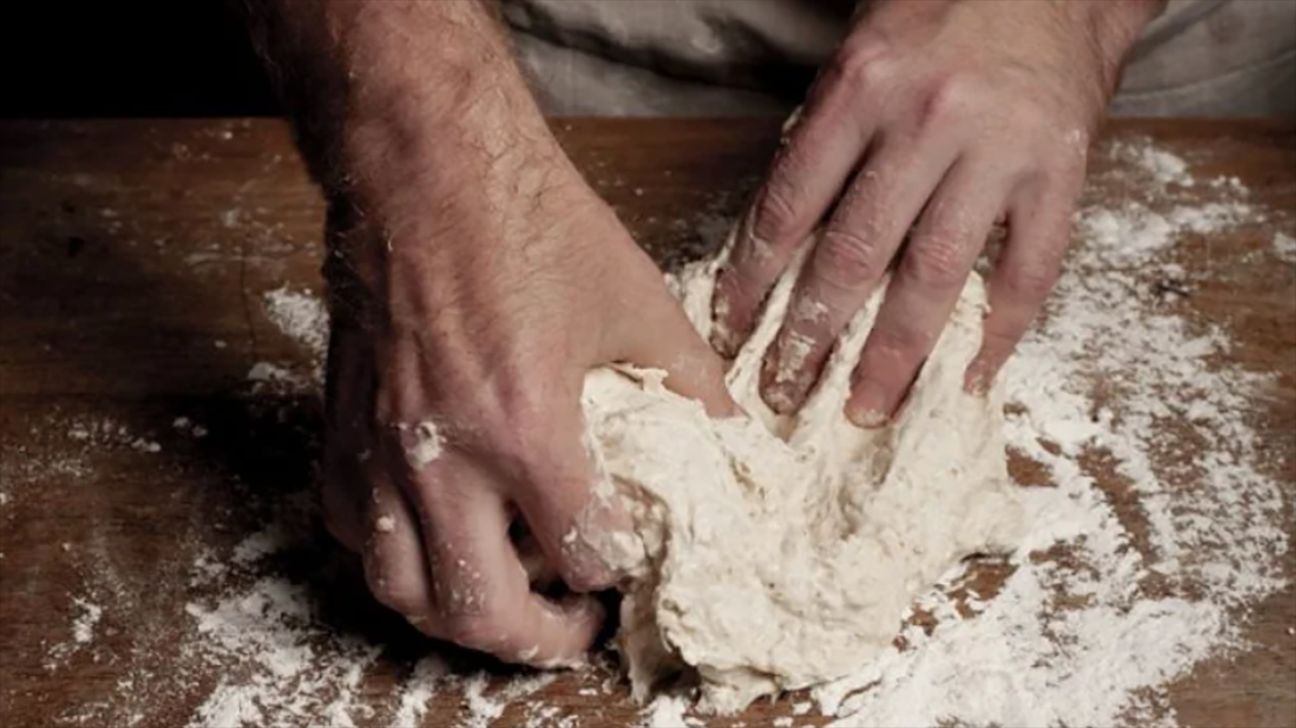
… and stretch, with your far hand holding the ball and your near hand pulling it towards you
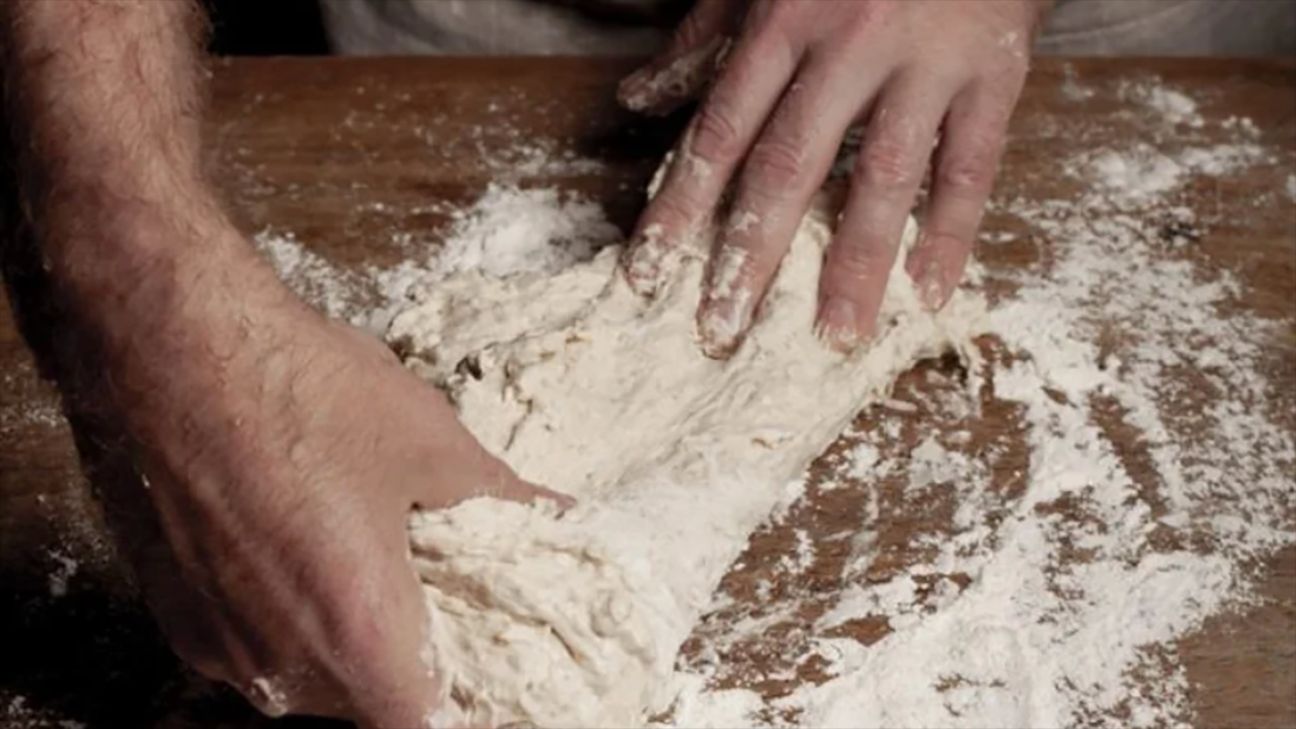
Fold the stretched dough back in on itself. Rotate through 90 degrees (a quarter-turn)…
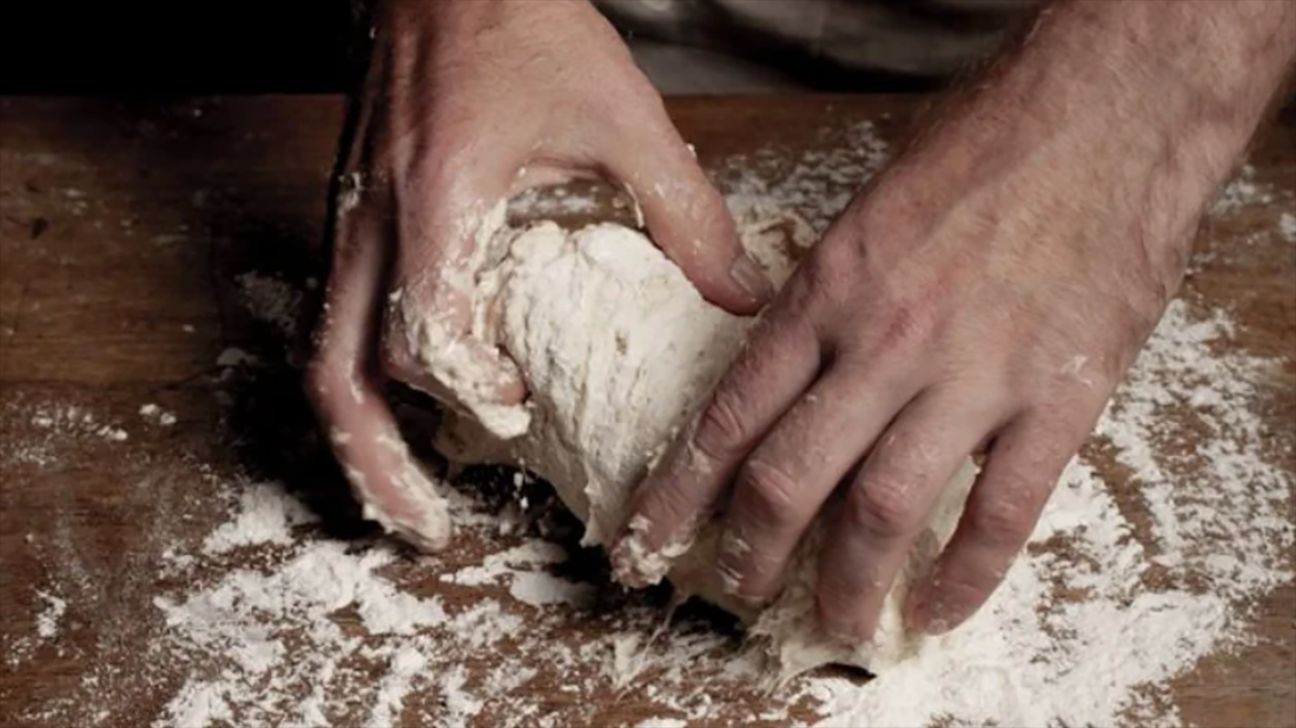
… and repeat. You’ll notice that the dough will get smoother and more elastic each time. The recipe will tell you how long to knead for.
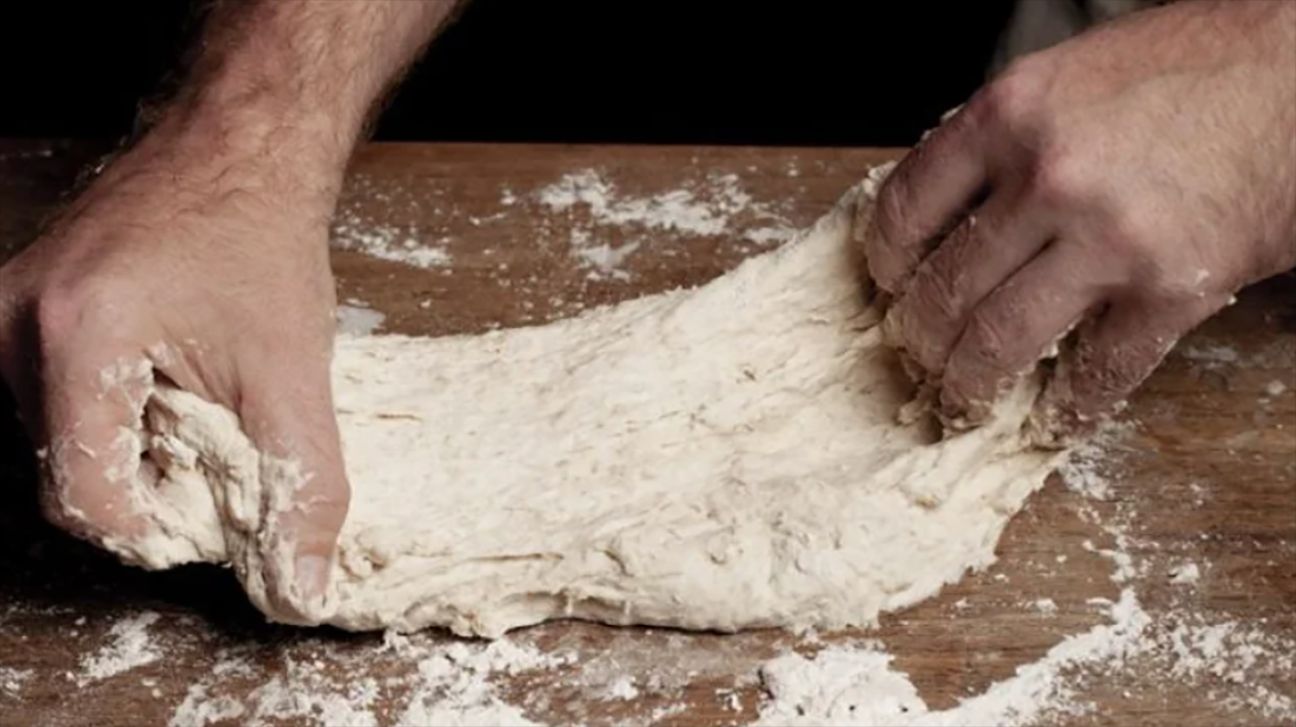
When you’re done, use the scraper to gather the ball together neatly, ready for transfer into your proving basket, or banneton.
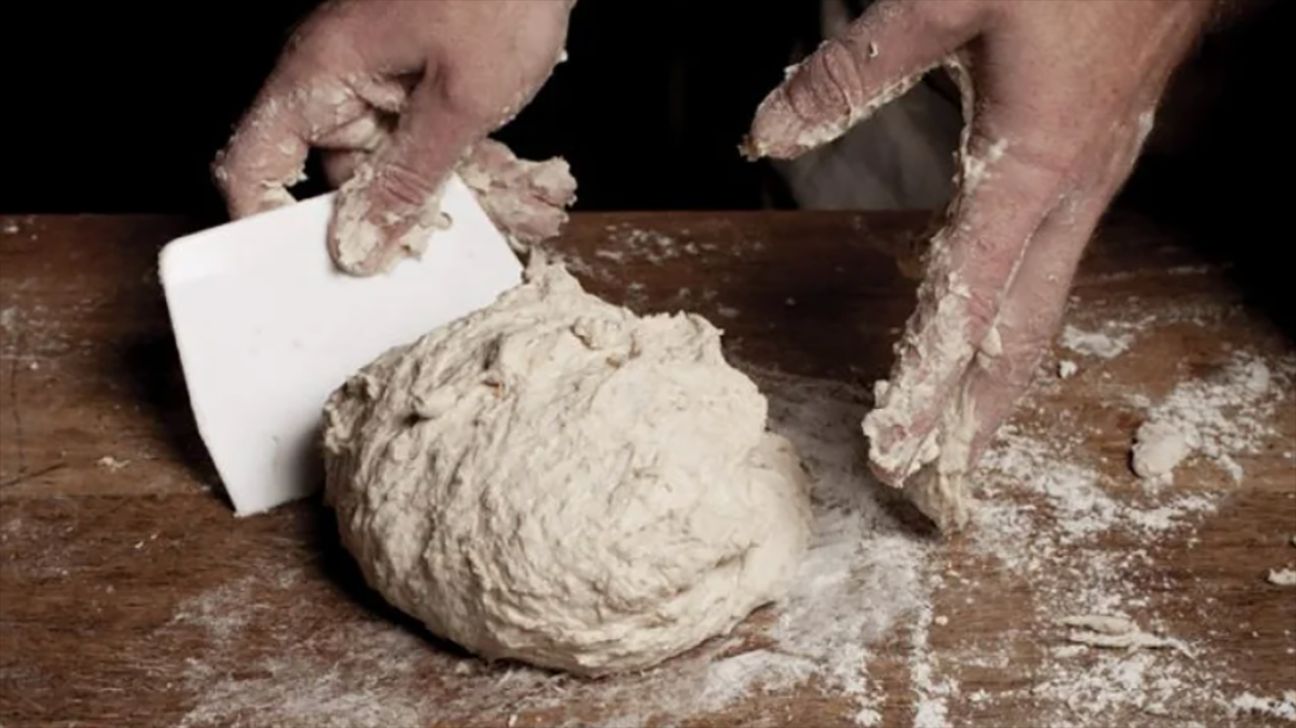
Many home bakers use a casserole (or Dutch oven) for their regular baking, as it means minimal work, and minimal washing up. With only a small amount of starter, the dough needs to have a high water content, and a long prove, to allow the yeast to multiply and spread through the dough.
Overnight White Sourdough
Makes: 1 loaf
INGREDIENTS
- 50g starter
- 400ml warm water
- 600g strong white bread flour
- 10g (2 tsp) fine salt
INSTRUCTIONS
- In a large mixing bowl, whisk together the starter and warm water.
- Add the flour to the wet mixture and mix thoroughly until you have an even dough. Cover the bowl with a clean tea towel and leave the dough to rest for 30 minutes.
- Mix the salt into the dough, adding it slowly to ensure that it is evenly spread.
- Wet your hands, then pull, fold and rotate the dough eight to ten times (see page 35) so that it forms a ball. Cover the bowl with cling film or a damp tea towel, and leave the dough to prove for about 8-10 hours (or overnight) at room temperature. The dough will become soft and puffy, and expand significantly.
- About an hour before you want to bake, lightly flour the work surface, and tip the dough out onto it. The dough will stick to the bowl: use your fingertips to ease it away. Pull, fold and rotate the dough 8—10 times, so it becomes tighter, and you have shaped a round loaf. Place the ball gently into a floured proving basket and let it rest for an hour.
- Preheat the oven to 230°C (210°C fan)/gas mark 8 and cut a piece of baking parchment about 35—40cm square. When the oven is ready, tip the loaf gently out of the proving basket and onto the centre of the baking parchment. Place the parchment and dough into a 1.8l casserole and use scissors to make a couple of cuts, 1—2cm deep, into the top of the dough. Put the lid on the casserole.
- Place the casserole on the middle shelf of the oven. There is no need to add a source of steam, as the loaf will steam itself in the casserole.
- After 20 minutes, remove the lid of the casserole so the crust can brown. After another 25 minutes, remove the casserole from the oven, remove the loaf, and tap its base: if it sounds hollow, the loaf is done. If not, place it back directly on the oven shelf for another 5-10 minutes, then test again. Leave to cool on a wire rack before eating.
Related Video: How to Make a No-Knead Bread with Store-Bought Yeast
Header image by Ida Riveros.

